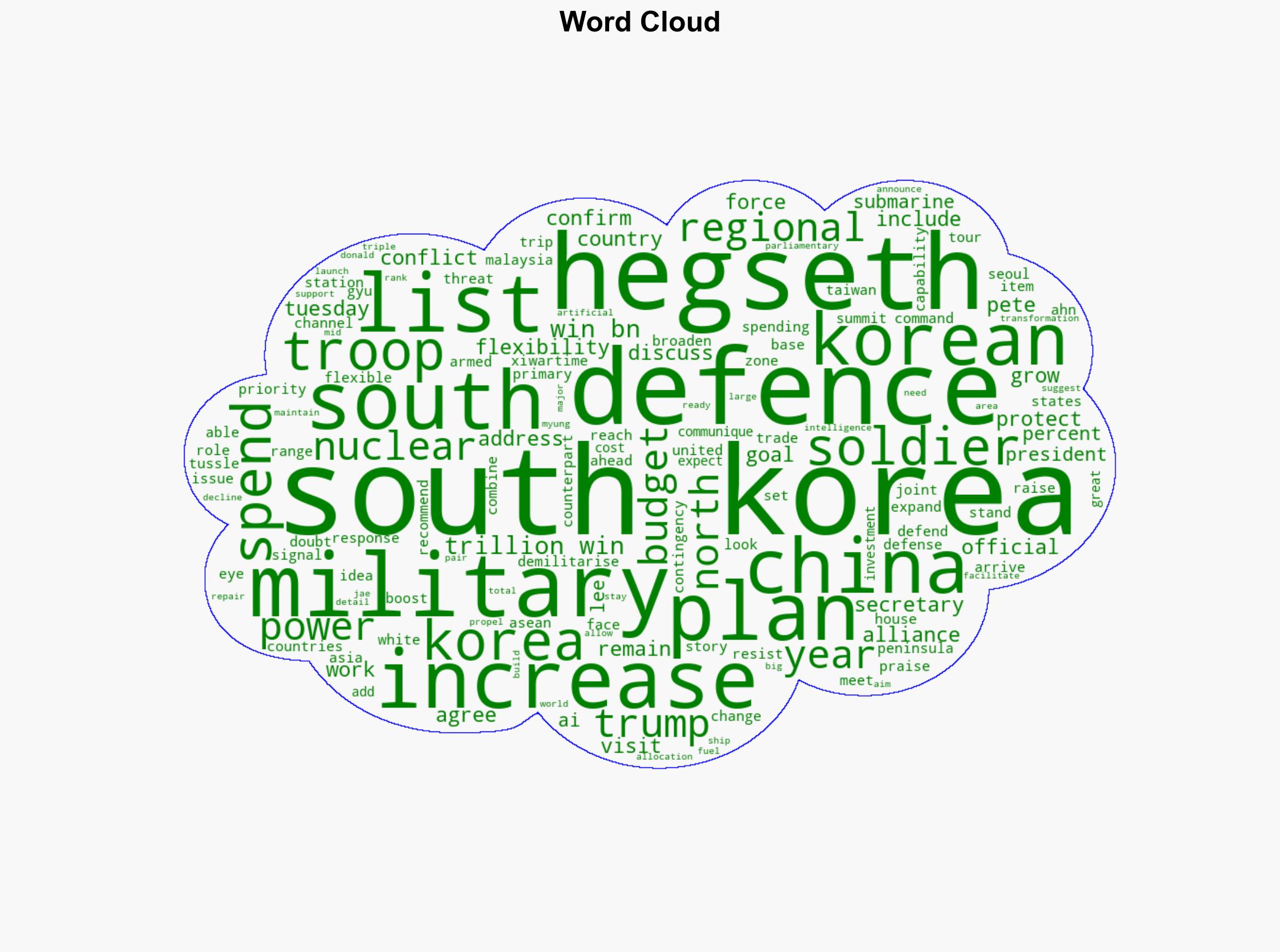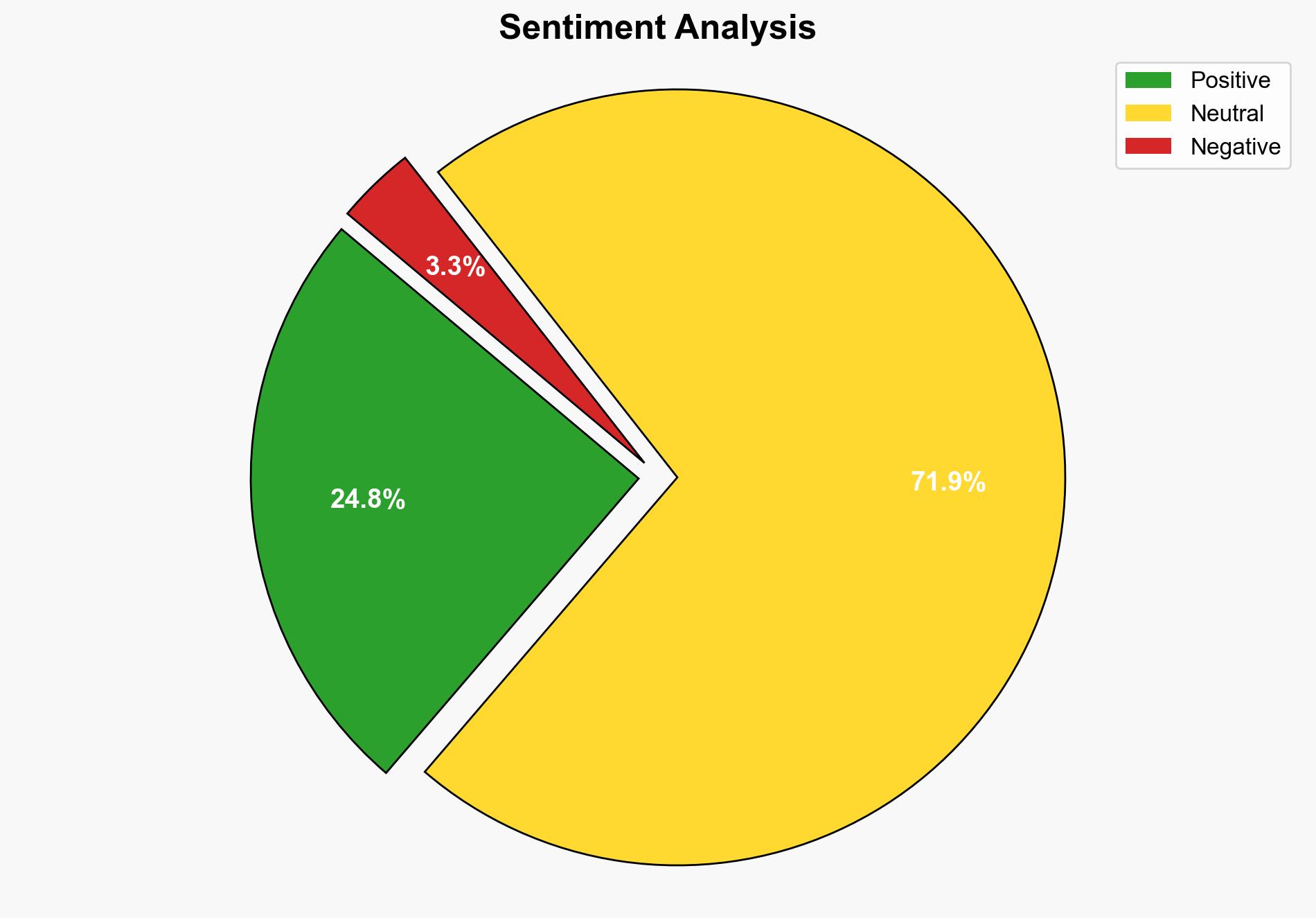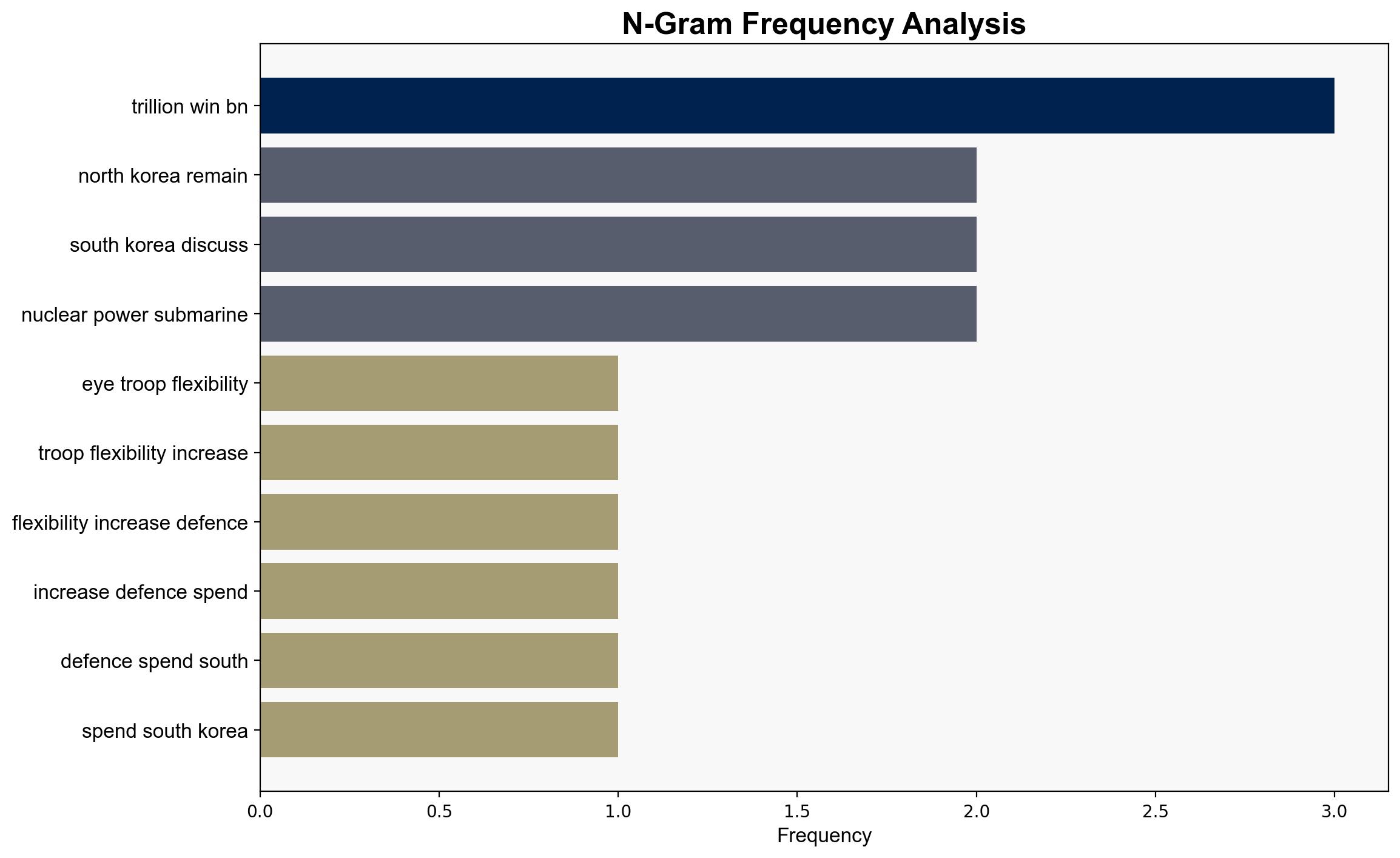US eyes troop flexibility increased defence spending in South Korea – Al Jazeera English
Published on: 2025-11-04
Intelligence Report: US eyes troop flexibility increased defence spending in South Korea – Al Jazeera English
1. BLUF (Bottom Line Up Front)
The most supported hypothesis is that the US and South Korea are enhancing military flexibility and defense spending to counter regional threats, primarily from North Korea and China’s growing influence. Confidence level: Moderate. Recommended action: Strengthen joint military exercises and intelligence-sharing to ensure readiness against potential regional conflicts.
2. Competing Hypotheses
1. **Hypothesis A**: The US and South Korea are increasing military flexibility and defense spending primarily to deter North Korean aggression and manage regional instability.
2. **Hypothesis B**: The increased military focus is a strategic maneuver to counter China’s expanding military presence and influence in the region, with North Korea as a secondary concern.
Using ACH 2.0, Hypothesis A is better supported due to explicit mentions of North Korea as a priority and the historical context of US-South Korea military cooperation focused on the Korean Peninsula. However, Hypothesis B cannot be dismissed given the broader regional dynamics involving China.
3. Key Assumptions and Red Flags
– **Assumptions**: It is assumed that North Korea remains the primary threat, and that increased spending will directly translate into enhanced military capability.
– **Red Flags**: Lack of detailed information on the specific nature of troop flexibility and the potential for misinterpretation of military intentions by China.
– **Blind Spots**: Potential underestimation of China’s response to increased US-South Korea military collaboration.
4. Implications and Strategic Risks
– **Patterns**: Continued military build-up could lead to an arms race in the region.
– **Cascading Threats**: Increased tensions could provoke North Korea into aggressive posturing or actions.
– **Potential Escalation**: Miscommunication or miscalculation could escalate into military conflict involving multiple regional actors.
– **Economic and Cyber Dimensions**: Increased defense spending may divert resources from other critical areas, including cybersecurity.
5. Recommendations and Outlook
- Enhance diplomatic channels with China to mitigate misunderstandings and prevent escalation.
- Conduct joint military exercises focused on interoperability and rapid response capabilities.
- Scenario Projections:
- **Best Case**: Strengthened deterrence leads to regional stability and reduced North Korean provocations.
- **Worst Case**: Heightened tensions result in military skirmishes or broader conflict.
- **Most Likely**: Gradual increase in military readiness without immediate conflict, but with ongoing regional tensions.
6. Key Individuals and Entities
– Pete Hegseth
– Lee Jae Myung
– Donald Trump
– Xi Jinping
7. Thematic Tags
national security threats, regional focus, military strategy, US-South Korea alliance





